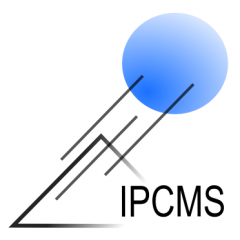Thomas PONS (Laboratoire de Physique et d’Etudes des Matériaux, ESPCI, Sorbonne Université, Paris (LPME))
Fluorescent biodetection assays using pairs of fluorescent donors and acceptors interacting via Förster Resonant Energy Transfer (FRET) are appealing thanks to their ease of use, versatility and specificity. They are however limited in sensitivity due in particular to their limited distance range. We are currently developing a novel type of biodetection assay based on energy transfer using Whispering Gallery Modes (WGM) from optical microcavities excited by fluorescent quantum dots as donors and polymeric dye-loaded nanoparticles (dyeNP) as acceptors. The high quality factor of the microcavities enables a strong enhancement of energy transfer to dyeNP acceptors placed within their evanescent field. In particular, we have studied their interactions in a model system using streptavidin-coated microcavities and biotinylated dyeNPs. Upon their specific biomolecular interaction, the dyeNP bind to the microcavity surface, leading to efficient energy transfer, with a typical sensitivity in the fM range, 4-6 orders of magnitude more sensitive than typical FRET assays. We further demonstrate the ultrasensitive detection of DNA oligonucleotides.
Contact :Damien MERTZ damien.mertz@ipcms.unistra.fr
Prochains évènements
Retour à l'agendaSoutenance de thèse : Lilian COLIN
Titre : "Développement de liquides moléculaires à chaînes siloxanes pour des applications en optoélectronique"
Séminaire AXE 1 "Sciences et Matériaux Quantiques" présenté par : Yannis Laplace
Titre: Surface plasmonic cavities at TeraHertz frequencies: ultrasmall, chiral and more
